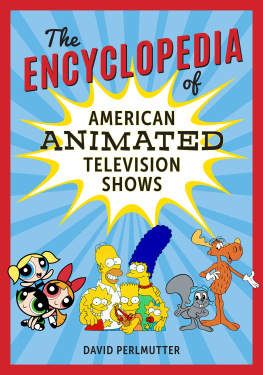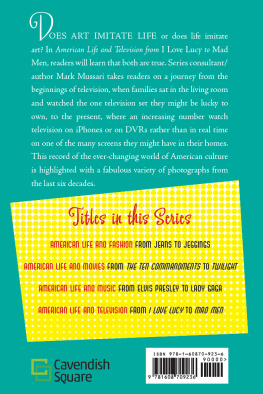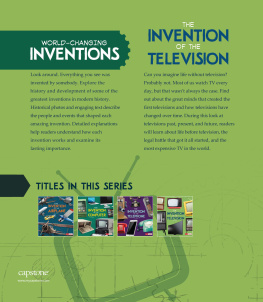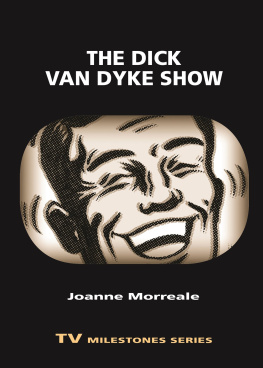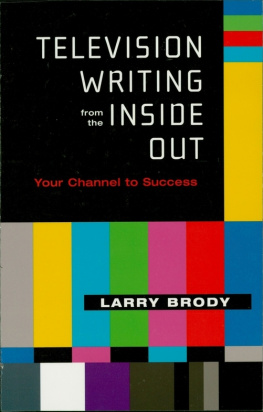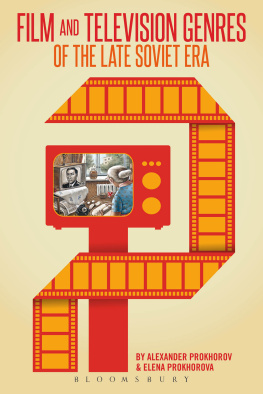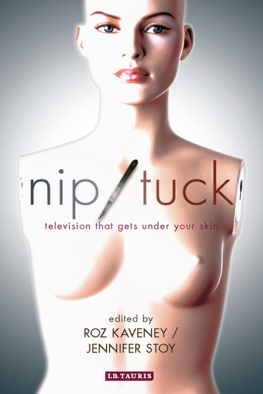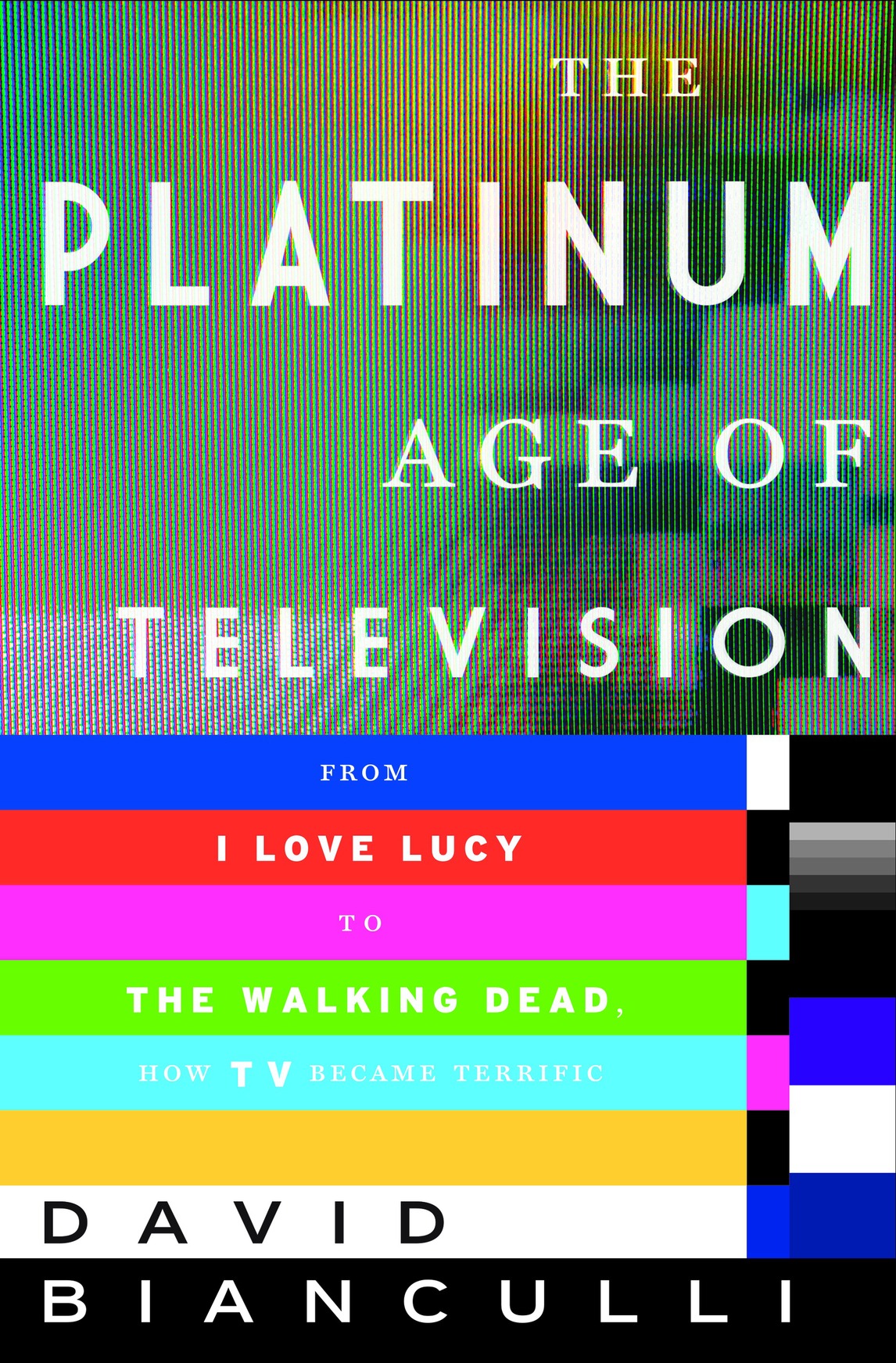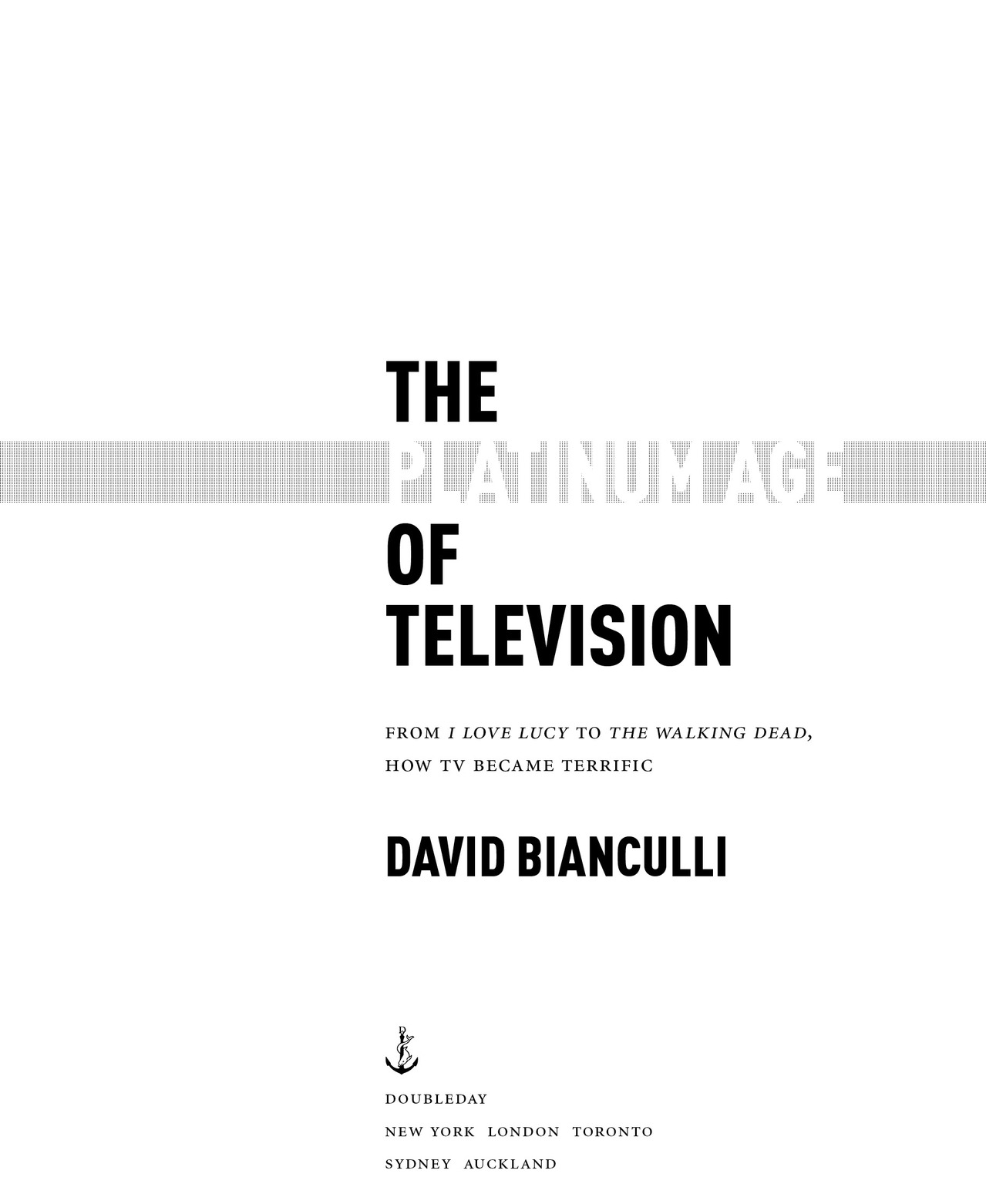ALSO BY DAVID BIANCULLI
Dangerously Funny: The Uncensored Story of The Smothers Brothers Comedy Hour
Dictionary of Teleliteracy: TelevisionsBiggest Hits, Misses, and Events
Teleliteracy: Taking Television Seriously
Copyright 2016 by David Bianculli
All rights reserved. Published in the United States by Doubleday, a division of Penguin Random House LLC, New York, and distributed in Canada by Random House of Canada, a division of Penguin Random House Limited, Toronto.
www.doubleday.com
DOUBLEDAY and the portrayal of an anchor with a dolphin are registered trademarks of Penguin Random House LLC.
Cover design by Michael J. Windsor
Cover images: digital glitch Igorstevanovic / Shutterstock; error bars Admirolas / Shutterstock; T.V. snow
Shutterstock; test pattern Donald Sawvel / Shutterstock
All photos are from the authors personal collection.
LIBRARY OF CONGRESS CATALOGING-IN-PUBLICATION DATA
Names: Bianculli, David, author.
Title: The platinum age of television : from I love Lucy to
The walking dead,
how TV became terrific / David Bianculli.
Description: First edition. | New York : Doubleday, 2016.
Identifiers: LCCN 2016027803 | ISBN 9780385540278 (hardcover) | ISBN 9780385540285 (ebook)
Subjects: LCSH : Television programsUnited States
History. | Television producers and directorsUnited
StatesInterviews. | BISAC: PERFORMING ARTS / Television /
History & Criticism. | PERFORMING ARTS /
Television / General.
Classification: LCC PN 1992.3. U 5 B 57 2016 | DDC 791.450973dc23 LC record available at https://lccn.loc.gov/2016027803
Ebook ISBN9780385540285
v4.1
ep
To my children, Kristin and Mark Bianculli,
Their respective spouses, Roland Ochoa and Jessica Kozzi,
And the grandchildren theyve given me
My favorite examples of quality evolution
Contents
INTRODUCTION
If youre going to look at the history and evolution of televisionquality TV in particularthere may be no better place to start than Mel Brooks. He was writing for Sid Caesar in TVs early days in the 1940s and 1950s and teamed with his fellow Your Show of Shows veteran Carl Reiner in the 1960s to record the first of several classic comedy albums featuring his 2000 Year Old Man. Brooks, in character as the oldest man alive, had seen everything and had his own funny spin on it all. And because Brooks, in real life, has been witness to the entire history of television, I asked him to put it all in perspectivehis perspective.
Hmmm, he says, warming to the challenge. Lets begin. First of all, in the beginning, theres a, like, four-inch picture tube that you have to look at with a magnifying glass, to begin with. And now, in Carl Reiners living room, theres a hundred-inch screen which will blind you, you know? That has changed dramatically.
At the beginningthere were only a few shows, and very quickly thered be a thing called a test pattern, with a kind of whistle, a whine at the end of it. That meant for you to wake up and turn off the TV, you know, so they had that sound. And everything, of course, was in black and white. And fuzzy. It was all fuzzy, and then it was clear. I dont remember when we went to color. We were in black and white for a long time
But today, all television has changed. I mean all television nowyou can see really good writing. I mean really good writingI love Breaking Bad. I love The Good Wife. I love Downton Abbey. I love Justified. I think these are wonderful. There are others, too, but these come to mind, and pop up, right away. They are ones that are wonderfully written and wonderfully acted, you know? I love that there are that many, and Im glad that theyre around.
As am I. As a TV critic for more than forty years, I find its always the good television, not the bad stuff, that keeps me going. But how did television characters evolve from the meek high school science teacher Wally Cox played in 1952s Mr. Peepers NBC sitcom to the villainous one Bryan Cranston played in 2008s Breaking Bad AMC drama? What inspired the writers, directors, producers, and performers of some of TVs best shows to make their shows? And if the 1950s, because of the artistic achievements of such live anthology dramas as Paddy Chayefskys Marty (later remade as an Oscar-winning movie) and Rod Serlings Patterns, are revered as Televisions Golden Age, what age are we in now? And when did that begin?
These questions turned out to be more difficult, more challenging, and ultimately more entertaining to answer than I originally thought. In evolutionary terms, you have to think both technologically (how advances in the medium, from videotape and color to satellite, cable, and streaming, impacted the product) and creatively (how, genre by genre and subject by subject, TV tended to become more sophisticated and complex). Then you have to define, and pinpoint the start of, your new age of television.
To test and advance my theories of TV evolution, I interviewed dozens of people whose work in television, over the decades, I have most admired, not only to learn what previous entertainers and programs had inspired and influenced their own, but also to ask about their early, formative relationships with popular culture. What did TVand, for the more senior people, radiomean to them when they were young? What, in particular, inspired them to do what they went on to do in the medium of television? And as I examined all these questions, I stumbled upon one more, which ended up informing and flavoring this book as well: What did television mean to me? Why had I become, and remained, a television critic, and what had that life given me in return?
The Platinum Age of Television addresses all those points. Starting right now.
The Platinum Age of Television
First, lets establish the meaning of the phrase the Platinum Age of Television and why Im comfortable both employing and defining it. One of the earliest printed uses of the term comes in my own 1992 book, Teleliteracy: Taking Television Seriously. If the Fifties were the Golden Age of television, I wrote then, the quantity and quality of todays TV offerings make the modern era worthy of the appellation The Platinum Age of Television. And when we consider what was to come in the decades since, that Platinum Age term, which plays off the recording-industry standards awarding platinum records to indicate sales even higher than those of gold record sales winners, might have been prescient, but it was also a bit premature.
So when did the Platinum Age of Television begin? Eventually, I narrowed it down to three possible starting points. The earliest is 1970, when Grant Tinker created MTM Productions and launched The Mary Tyler Moore Show sitcom on CBS, starting a quality revolution in both comedy and drama. The next is 1981, with the debut of MTM Productions Hill Street Blues on NBC, which changed the look, pace, and content of weekly TV drama series. And finally, theres 1999, the eve of the new century, when television gave us one of the last great dramas on broadcast TV, NBCs


